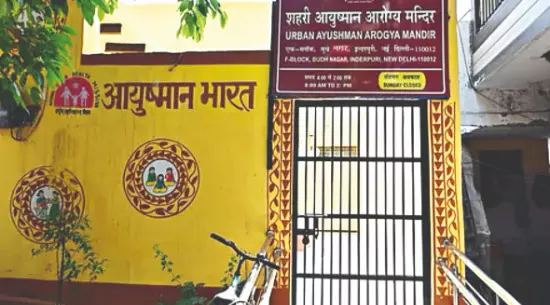Aarogya Mandirs: A fresh coat of paint on old healthcare woes

NEW DELHI: When the Delhi government unveiled its Aarogya Mandirs earlier this year, the initiative was introduced as a bold upgrade to the existing Mohalla Clinics. With promises of better diagnostics, postnatal care, yoga sessions, family planning services, and a wider stock of essential medicines, the vision was clear: accessible, affordable, and expanded public healthcare. But a ground visit to the Tis Hazari Aarogya Mandir reveals a reality that is still catching up with the hype.
At the site, the clinic is being managed by only one medical and two non-medical personnel far fewer than the six to seven staff members mentioned in official communications. The atmosphere is one of quiet strain, where expectations outpace resources. A non-medical staff member at the facility remarked candidly, “We’re doing the best we can, but there are only three of us here. It’s difficult to manage patient records, registration, and maintain the place all at once.” While yoga sessions are being conducted in limited shifts, the majority of services remain restricted to postnatal care and family planning. Diagnostic services and access to all 105 listed medicines remain spotty. Furthermore, Clinical Adverse Reaction (CAR) records, crucial for patient safety, are reportedly being updated every 30 to 45 hours-raising concerns about timely health monitoring.
The much-anticipated online portal that was supposed to streamline access and reporting has not yet been launched. Vaccination services are only available on Wednesdays and Fridays, limiting accessibility for working individuals and families.
Patient feedback reflects mild improvements but ongoing frustration. One man waiting in the narrow seating area said, “It’s better than before in some ways, but we still wait a long time. Sometimes we come back the next day for tests or medicines.” The facility continues to struggle with basic infrastructure: inadequate seating, crowded waiting areas, and unclear timelines for full implementation of promised services.
The Aarogya Mandirs have also entered the political battlefield. AAP Delhi chief Saurabh Bharadwaj accused the BJP of merely repackaging old clinics. “The dispensary in Chirag Delhi was opened by us in 2017. Now it has a new name and colour. That’s not a new project; that’s rebranding,” he said, pointing to what he described as an attempt to claim existing infrastructure as fresh innovation.
At their core, Aarogya Mandirs were intended to strengthen the public health network and bridge gaps in primary care. But the current reality points to an initiative still stuck between aspiration and execution. Staff shortages, delayed systems, and political point-scoring are hampering what could be a transformative shift in urban healthcare.
Good healthcare doesn’t just need announcements it needs groundwork. Until these centers are fully staffed, properly equipped, and freed from political tug-of-war, the Aarogya Mandirs risk becoming yet another case of good policy falling short at the point of delivery.



